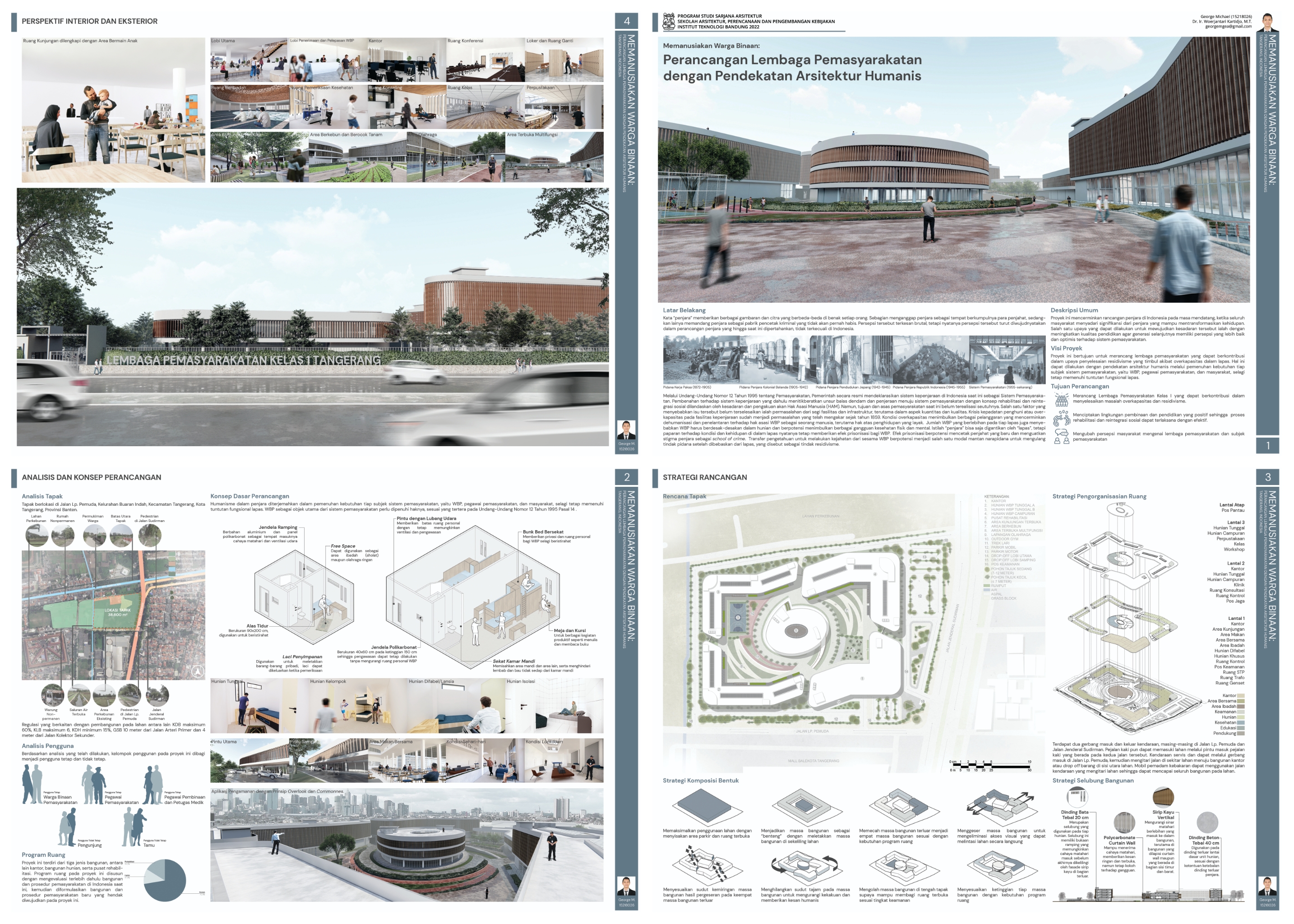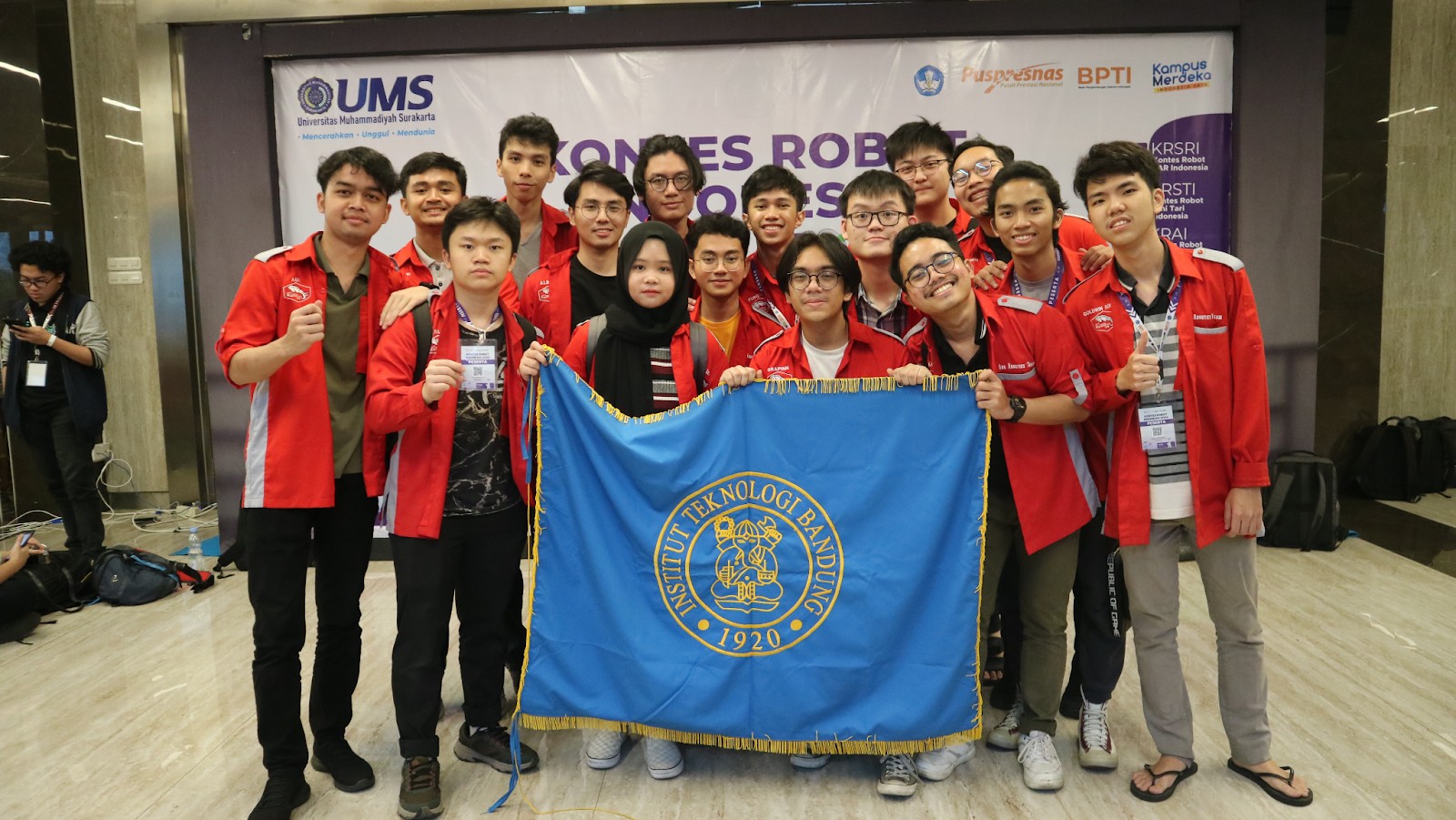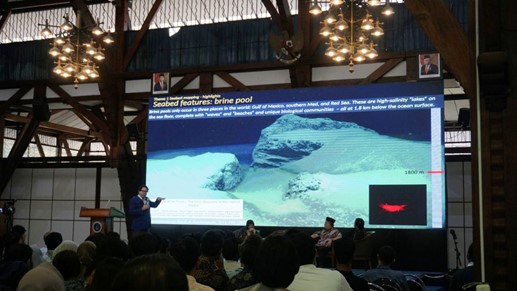SAPPK ITB Student Proposes Prison Design With Humanist Architecture Approach
By Adi Permana
Editor Adi Permana

BANDUNG, itb.ac.id—Graduating from the desired study program at Institut Teknologi Bandung is the target that all ITB students yearn for. To achieve that target, all undergraduate students are required to pass the ultimate stage: the Final Project (also known as "TA", short for Tugas Akhir). Usually, TA is the testing ground for the student’s creativity and analytical capability after studying at ITB. This is exactly what happened to 1040 undergraduates who have officially graduated from ITB recently.
Various titles and topics for the TA of the Architecture Study Program emerged. From all of them, one particularly stood out. When most of the students discussed the topics related to culture, tourism, or public spaces, this one student proposed something like no other.
George Michael, familiarly known as George, is an ITB Architecture student from the Class of 2018. The Jakarta-born student has been working on a research titled "Humanizing the Prisoners: Designing Correctional Center With Humanistic Architecture Approach."
In short, George studied and analyzed prison designs for his TA. He brought a topic that had been long considered trivial, yet now it has greatly increased public awareness and realization.

*The prison design proposed by George Michael
During George’s completion of his TA, he was continuously supported by his supervisor. Under the direction of Dr. Ir. Woerjantari Kartidjo, M.T., George was always reminded to explore various images and information regarding prisons via books as well as films. In addition, the supervisor also provided him with insights and discussions related to the security and necessity in prisons.
The idea to analyze prison designs originated from George’s own personal concerns. At one time during his study at ITB, George was involved in one committee that publicized the slogan "Humanizing Humans." However, he noticed that the real-life implementation in society was still very minimal.
“Although I heard that very slogan many times back then, I felt that the main objective was still not achieved. Because of this, I was inspired to implement the same principle, but for the application of correctional centers,” said George, explaining the background of his TA.
“Before finally deciding to take on prison designs, I had thought of other correctional facilities, such as the Pusat Rehabilitasi Narkoba and Rehabilitasi ODGJ. This is because I have always been interested in everything related to humans and humanity. However, in the end I decided to take this topic because it is interesting and rarely discussed in architectural discourse,” he added.
According to George, the development of community institutions like prisons must not only be established upon legal rules and policies as its main pillars, but also reinforced by the design aspect. If these two elements synergize, the effect of said institutions will be more optimal.
When asked about his expectations regarding his TA, George hoped that his study will increase the participation of architects in correctional centers. In addition, George also hoped the general public can gradually change their mindset on prisoners. “Inmates should and must be educated and guided so that they are ready when they return to the society,” George stated.
To conclude the interview, ITB’s Public Relations Reporter asked George to give advice to all students that are now still fighting their way through their studies.
“For all friends and juniors, don’t be afraid to be different and also don’t be afraid to be wrong. Make the most of the opportunity while you are still a student. In other words, now is the time to learn, make mistakes, and correct those mistakes. Always try to apply our knowledge to answer the problem around us. Take a look at our surroundings, identify the problems, then offer the solutions,” George advised.
After graduating, George will still continue his study at ITB’s Architecture Study Program for at least one more year to complete his master’s. George’s relatively quick study time was made possible by his participation in the Pembinaan Progam Studi Magister (also known as PPSM or Fast-Track) program, a dedicated program that is directly provided by ITB.
Reporter: Madeline Abigail Lukito (Architecture, 2020)
Translator: Ariq Ramadhan Teruna (Chemical Engineering, 2021)

.jpg)
.jpg)
.png)
.jpg)
.jpg)



